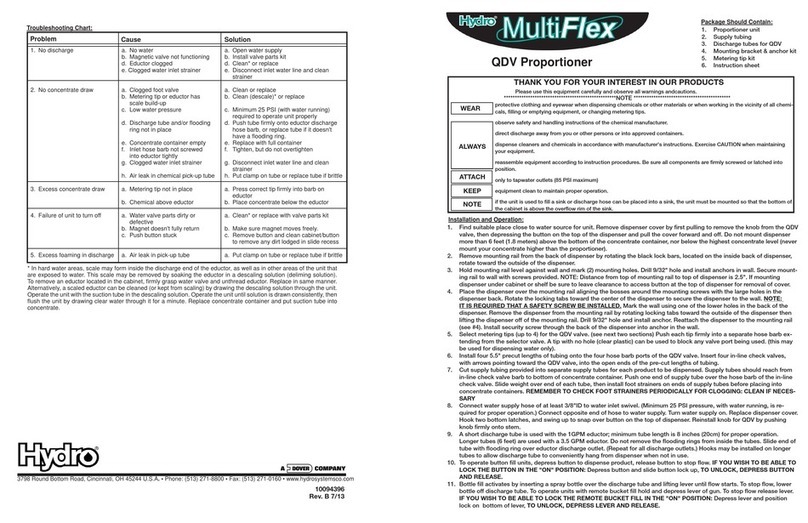
vi
Table of Contents
1 General Information...................................................................................................... 1
1.1Introduction ........................................................................................................ 1
1.2MS Matrices ....................................................................................................... 2
1.3MP Matrices ....................................................................................................... 3
1.4CB Matrices........................................................................................................ 4
1.5Technical Specifications..................................................................................... 5
1.6Safety Precaution............................................................................................... 6
1.7Inspection........................................................................................................... 6
1.8Maintenance....................................................................................................... 6
1.9Repacking for shipment ..................................................................................... 6
2 System Layout ............................................................................................................. 7
2.1Front Panel Layout............................................................................................. 7
2.2Rear Panel Layout for 2U models ...................................................................... 8
2.3Rear Panel Layout for 3U models ...................................................................... 9
2.4Rear Panel Layout for 4U models .................................................................... 11
2.5Top View Layout .............................................................................................. 13
2.6RF configuration............................................................................................... 14
3 Connections ............................................................................................................... 15
3.1Power Connection............................................................................................ 15
3.1.1Line Voltage............................................................................................... 15
3.1.2Line Power Connection.............................................................................. 15
3.1.3Line Fuse Replacement............................................................................. 15
3.2Ground Connection .......................................................................................... 16
3.3RS232 Connection ........................................................................................... 17
3.4CAN Bus Connection ....................................................................................... 18
3.5GPIB Control Connection................................................................................. 19
3.5.1GPIB Control Connector............................................................................ 19
3.5.2Interface Signals........................................................................................ 20
3.5.3Data Lines ................................................................................................. 20
3.5.4Handshake Lines....................................................................................... 21
3.5.5Interface Management Lines ..................................................................... 21
3.6USB Port .......................................................................................................... 22
4 Configuring the Matrix for Operation .......................................................................... 23
4.1Matrix Configuration ......................................................................................... 23
4.2Dow-Key CAN bus switches............................................................................. 23
4.3Adding and Deleting Switches.......................................................................... 24
5 Manual (LOCAL) Operation........................................................................................ 26
5.1The Touch Screen Interface............................................................................. 26
5.2Main Menu ....................................................................................................... 28
5.2.1Switching Operations................................................................................. 28
5.2.2Error Operations ........................................................................................ 30
5.2.3System Settings......................................................................................... 31
5.2.4Ethernet Options........................................................................................ 33
5.2.5LCD Options .............................................................................................. 33
5.2.6Set RS232 Baud Rate ............................................................................... 33
5.2.7Set GPIB Address ..................................................................................... 33
6IEEE 488.2 Register model.................................................................................... 34
6.1Introduction to IEEE 488.2 ............................................................................... 34




























